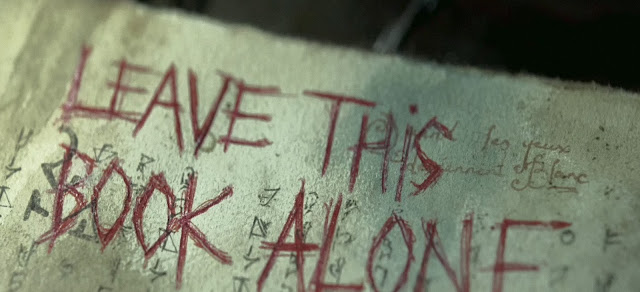The Werewolf
 |
| Artwork by Jim Perez |
Dir. Henry MacRae
A Navajo witch-woman believes her husband has deserted her, but unbeknownst to her, he has actually been killed. When she is rejected by his family, she raises her daughter to hate all white men. The daughter grows up to become a werewolf and she seeks revenge on those who killed her father and wronged her mother.
While now believed to be a lost film, destroyed in a fire in 1924, The Werewolf is thought to hold the honour of being the first ever werewolf film. It also marks the first cinematic appearance of the female werewolf, a figure who, until relatively recently, was often overlooked (in cinema) in favour of her male counterpart. Interestingly, The Werewolf can also be seen (perhaps rather tenuously) as the first Universal horror film, though at the time, the distributor was still known as the Universal Film Manufacturing Company. It was directed by Canadian filmmaker Henry MacRae, who, amongst other things, is credited as pioneering the use of artificial light for interior filming and the use of double exposures in early cinema. The screenplay was written by Ruth Ann Baldwin, a former journalist, and is very loosely based on Henry Beaugrand’s short story ‘The Werewolves’ (1898), which tells of a band of pioneers who believe there are (Native American) werewolves prowling around outside their snowbound Canadian fort.
According to Chantal Bourgault du Coudray, author of 'The Curse of the Werewolf: Fantasy, Horror and the Beast Within', The Werewolf combined “anxiety about female sexuality with fears of racial degeneracy” and “contributed to a discourse that envisioned women as a threat to the lives and aspirations of men.” While the likes of Werewolf of London (1935) and The Wolf Man (1941) popularised the notion of the doomed lycanthropic (male) protagonist who desperately wanted to be free of his curse, The Werewolf’s depiction of a witch-woman who uses her ability to change into a wolf to obtain revenge, is something that became quite typical in representations of the female werewolf. Female werewolves tend to be more comfortable in their wolf skin than their male counterparts, and because they generally embrace their more primal impulses, are seen as a threat to (patriarchal) order and must be destroyed. The aligning of femininity with nature, the body and the wilderness stems from nineteenth century discourse which posited women as men’s ‘other’; masculinity was aligned with culture and the mind (hence the reason why male werewolves tend to be more psychologically tormented by their condition - which often guaranteed their salvation, whereas female werewolves were usually destroyed).
 |
| Ginger Snaps Back: The Beginning (2004) |


